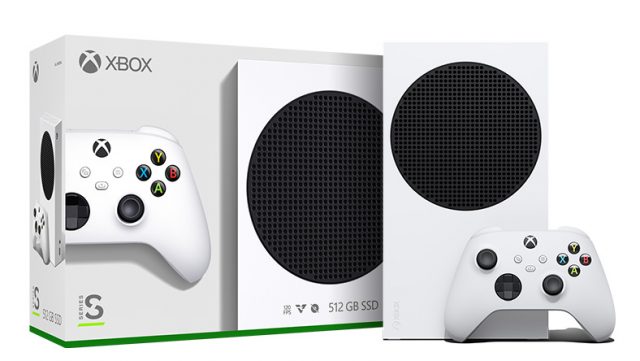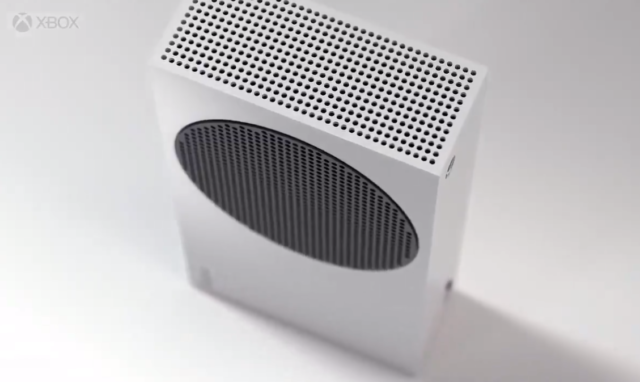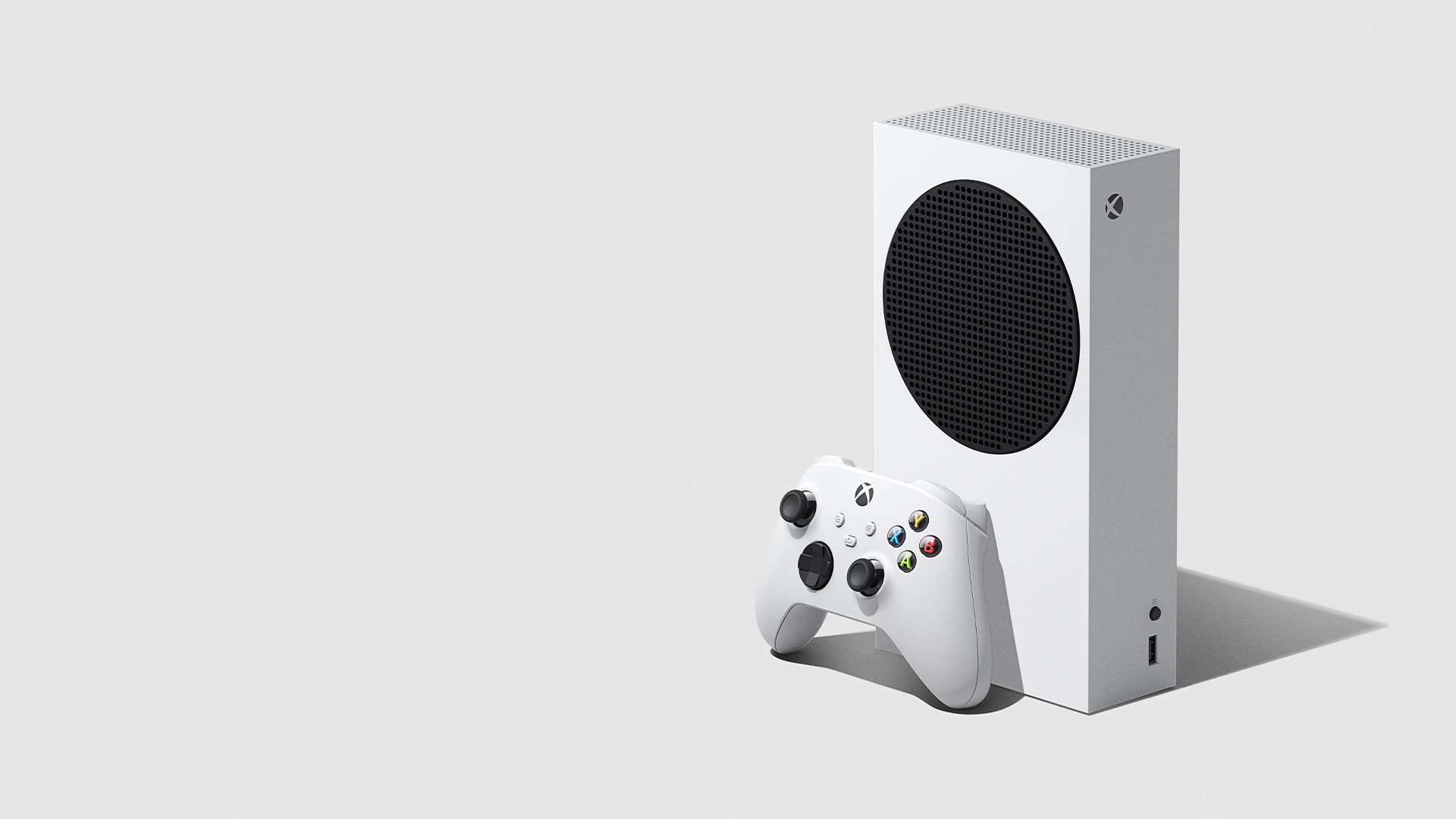This week Microsoft will begin a new generation of gaming with the release of not one, but two different consoles. While their flagship and most advertised model happens to be the Xbox Series X, which is black and kind of looks like a small fridge, it isn’t the only one worth talking about. In fact, I feel as if the other console they’re releasing — the much less talked about Xbox Series S — deserves more attention than it’s been getting.
As you very likely know, the Xbox Series X targets 4K gaming at up to 120 frames-per-second. It’s a beast with a lot of power under the hood; so much so that Microsoft has crowned it the most powerful console in existence. The Xbox Series S, on the other hand, does not target 4K resolution. In fact, it’s only designed for 1080p gaming, or 1440p at most. As such, it’s designed for the less hardcore gamers among us.
The above is especially true given that the Xbox Series S is a digital only console, meaning that it doesn’t have a disc drive. What’s odd about this, though, is how small the console’s internal solid state drive is given this fact. Since it’s a digital only device you’d think that it would have a big hard drive, but it does not. Instead of the X’s 1 terabyte SSD, the S merely has a 512gb SSD. With the operating system’s size taken into account, that leaves approximately 364gb for installing games, some of which are up to 100+ gigabytes these days. The good news here is that Microsoft has said they’re aiming to keep install sizes down as much as possible. There’s also the fact that the S should have smaller install sizes for its games, because those who buy it won’t have to worry about downloading 4K assets like those who buy the X.
As a result of those things, the Xbox Series S makes a great Game Pass machine, and a great device for those who maybe don’t play a ton of games. While it will play every game the X will, it simply won’t do it at the same resolution, or using discs.
A couple of weeks ago, Microsoft was nice enough to send me an Xbox Series S for review purposes, along with a decent amount of games. Over the last week or so, I’ve spent quite a bit of time with the device, and wanted to share my thoughts here. Why is there a discrepancy in the time periods listed? Well, I made a mistake during the first week. I decided to download as many of the games as I could to my external using my Xbox One X review unit, so that I could just move them over to the S and save its internal drive from hours of downloading. After all, my internet is dreadfully slow, and it takes a long time to download any modern game. However, that was very dumb, because when I moved the games over to the S I ended up having to reinstall them from scratch, because the S wanted me to download a different version of them. Assassin’s Creed: Valhalla, for instance, required me to reinstall its forty plus gigs and then download a 3gb upgrade update.

When I pulled the S out of its box, I was wowed by how small the console truly is. It’s shockingly small, and it’s hard to believe that much power can reside in such a tiny case. The thing is almost smaller than my DVD player, although it’s thicker. It is, however, much tinier than the Xbox One X that I removed for it. Don’t quote me on this, but it almost looks to be 2/5 its size. Then again the One X was massive.
As the rumours have stated, the Xbox Series S only offers about 364gb of available storage. This means that there isn’t a lot of room to install multiple games, unless they’re tiny. I currently have DiRT 5, Watch Dogs: Legion, Gears of War 5 and Assassin’s Creed: Vallhalla installed, and only have about 160gb left. Thankfully I have three different external hard drives that were in use during the last generation. That’s where I stored all of my Xbox One games, to save my internal drives from over use while downloading at slow speeds, and where I’ll store most of my current gen games. Due to what happened the other week, I may have to download them directly to the Series S’s internal first.
Some of the aforementioned games are honestly still updating or upgrading, too, which is why I haven’t played them yet.
Set-up was a breeze, and the longest part of it all was waiting for the initial console update to download and install. Surprisingly, a lot of it was handled through my phone and the available Xbox app (which was basically ruined the other week, by an awful UI change and update, but that’s a story for another day). The console gave me a code to input into the app, and once I did that it was authenticated and all of my settings could be moved forward.
The quick start guide, which is printed on a thin piece of cardboard-like stock and included within the box, made it seem as if it was only possible to set up the S with the app. Hopefully that isn’t the case, because not all folks will have access to a phone and the app, or know how to use it.
Once that was done, I moved the games over. Days later, I was told I had to upgrade or update them with updates the size of their original install files. I mentioned this all before, though, so I won’t go over it again.
Since I’ve set up the Xbox Series S, I’ve spent quite a few hours playing it. The first game I played was Kingdoms of Amalur: Re-Reckoning, because I wanted one of my favourite games to be the first one I played. Its load times seemed faster than ever before, even though I was running it off of an external hard drive.
After that, I played some Torchlight III and noticed the same thing. I’ve also played Need for Speed: Hot Pursuit Remastered, and two next-gen games: Assassin’s Creed: Valhalla and DiRT 5. Assassin’s Creed was undoubtedly the most impressive, but all looked good and played quite well, although I experienced a couple of in-game glitches in the Xbox One games. Those probably weren’t due to the console though.

Games loaded pretty quickly, and I was pleasantly surprised by how fast the loading times were overall. Sometimes it felt like things had loaded in the blink of an eye, whereas it definitely took longer on Xbox One.
What’s impressed me most about the S — outside of its size at least — is its controller. The new Xbox Series controller is a nice improvement over the Xbox One’s revised controller, even if it’s not a major difference. The joysticks aren’t as hard on your skin, the shoulder buttons feel more secure and the triggers have a nice texture on them. Said texturing is similar to what’s on the back of the controller.
The only real issue that I’ve encountered has come from My Games & Apps, but it’s something that I remember noticing before I unhooked my Xbox One X. That is, whenever I go to look for game updates it takes a while for them to load. If I’m downloading anything the wheel will just spin and spin and spin, and nothing will appear even if there are updates to download. If I stop the download then they eventually load in after several seconds. I don’t know if it’s the newest console update, or if it’s just my awful Internet, which I wish I could upgrade. It’s one of the main reasons as to why I would often buy discs instead of digital versions of games, and that’s something I will admittedly miss.
Although I was planning to get an Xbox Series X and managed to pre-order a couple, I’m still quite impressed with the Xbox Series S and may just stick with it for a while. I’m currently undecided, though, because I can see the space and lack of a disc drive being an issue in the future given my location. I may end up buying the X this month anyways, but we’ll see.
That said, the Xbox Series S is a wonderful system for those it’s marketed towards, and something I’m admittedly still wowed by. Given its size, it’s impressive how well it runs games and how much power really is under the hood, in what is the tiniest console case I’ve seen in a long time. While it may not be for most hardcore gamers, I hope that people will give it the respect it deserves.
Microsoft’s Xbox Series S is a good, cheap alternative for those who wish to enter the next generation while on a budget. Not to mention those who don’t game a lot. It’s also got a really nice aesthetic, thanks to smart design choices and a clean, almost all white colour scheme.
We were provided with this hardware from Microsoft, for review purposes.

